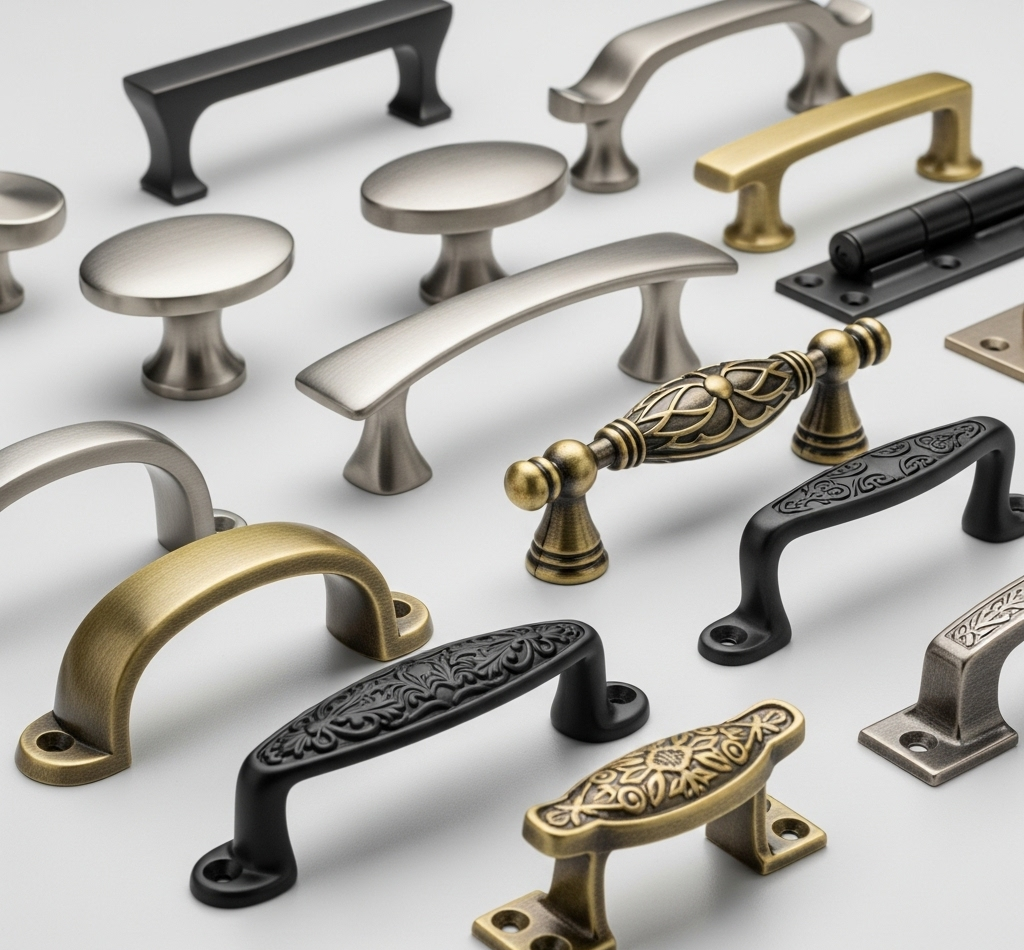
Sourcing high-quality furniture hardware—hinges, glides, handles, and connectors—is crucial for building or refurbishing furniture that’s both functional and aesthetically pleasing. Whether you’re a DIY enthusiast, a professional furniture maker, or a designer, knowing where and how to source these components can elevate your projects. Here’s a comprehensive guide to help you navigate the process.
Before sourcing hardware, clearly define your project’s needs:
Functionality: Determine the specific roles of each hardware piece. For example, do you need soft-close hinges for cabinet doors or heavy-duty glides for drawers?
Material and Finish: Consider the material (e.g., brass, stainless steel, or plastic) and finish (e.g., polished, matte, or antique) to match your furniture’s style and durability requirements.
Size and Specifications: Measure precisely to ensure compatibility. For instance, hinge sizes must match door thickness, and connectors should align with panel dimensions.
Load Capacity: For glides and connectors, check weight ratings to support your furniture’s intended use.
Budget: Establish a budget to balance quality and cost, as hardware prices can vary widely.
Here’s a quick overview of the key hardware types and their considerations:
Hinges allow doors and lids to pivot smoothly. Common types include:
Butt Hinges: Simple, durable, and ideal for cabinet doors.
Concealed Hinges: Hidden for a sleek look, often used in modern furniture.
Piano Hinges: Long and continuous, perfect for lids or panels.
Soft-Close Hinges: Prevent slamming, enhancing user experience.
Sourcing Tip: Look for hinges with corrosion-resistant coatings for longevity, especially for outdoor or humid environments.
Glides (or drawer slides) enable smooth drawer operation. Types include:
Side-Mount Glides: Common and easy to install, suitable for most drawers.
Under-Mount Glides: Hidden for a cleaner look, ideal for high-end furniture.
Ball-Bearing Glides: Smooth and durable, great for heavy loads.
Sourcing Tip: Check load ratings and ensure glides match drawer dimensions. Opt for full-extension glides for maximum drawer access.
Handles and knobs add style and functionality to doors and drawers.
Styles: From minimalist to ornate, choose designs that complement your furniture’s aesthetic.
Materials: Common options include metal, wood, ceramic, or glass.
Sourcing Tip: Test ergonomics—handles should feel comfortable and secure. Bulk purchasing can reduce costs for large projects.
Connectors join furniture components, ensuring stability.
Dowel Pins: Simple and strong for wood joints.
Cam Locks: Common in flat-pack furniture for easy assembly.
Screws and Bolts: Versatile for various connections.
Sourcing Tip: Ensure connectors match material thickness and type (e.g., wood or particleboard) to avoid structural issues.
Online platforms offer vast selections and competitive pricing:
Amazon: Wide variety, fast shipping, and customer reviews. Great for small orders or unique pieces.
Rockler: Specializes in woodworking hardware with detailed specifications.
Lee Valley: Known for high-quality, unique hardware for custom projects.
Blum: A go-to for premium hinges and glides, especially for cabinetry.
Pros: Convenience, variety, and often lower prices.
Cons: Quality can vary; check reviews and return policies.
Local or regional stores like Woodcraft or specialty cabinet hardware shops offer hands-on selection.
Pros: Expert advice, ability to inspect items, and sometimes custom orders.
Cons: Higher prices and limited stock compared to online options.
For bulk purchases, consider wholesalers like Häfele or Richelieu Hardware.
Pros: Cost-effective for large projects, high-quality options, and bulk discounts.
Cons: May require a business account or minimum order quantities.
Chains like Home Depot or Lowe’s carry common hardware.
Pros: Immediate availability, good for small or urgent needs.
Cons: Limited selection for specialized or high-end hardware.
For unique or vintage hardware, check salvage yards, antique stores, or online marketplaces like eBay.
Pros: One-of-a-kind pieces for custom or restoration projects.
Cons: Inconsistent availability and potential wear on used items.
Research Suppliers: Read reviews, check ratings, and verify supplier reputation. Look for certifications like ISO for quality assurance.
Request Samples: For large or custom orders, request samples to test fit and quality before committing.
Compare Prices: Use price comparison tools or request quotes from multiple suppliers to get the best deal.
Check Compatibility: Ensure hardware matches your furniture’s material, style, and dimensions. For example, soft-close hinges may require specific door alignments.
Consider Lead Times: Custom or bulk orders may have longer delivery times, so plan ahead.
Sustainability: Opt for suppliers offering eco-friendly or recyclable hardware if sustainability is a priority.
Ignoring Specifications: Mismatched sizes or load capacities can lead to installation issues or furniture failure.
Overlooking Quality: Cheap hardware may save money upfront but can wear out quickly, affecting functionality.
Skipping Reviews: Customer feedback can reveal issues like poor durability or installation challenges.
Not Planning for Extras: Order extra pieces for replacements or future repairs, especially for custom hardware.
Sourcing furniture hardware requires careful planning, from understanding your project’s needs to choosing reliable suppliers. By focusing on quality, compatibility, and aesthetics, you can ensure your furniture is both functional and visually appealing. Whether you shop online, visit specialty stores, or explore salvage options, take the time to compare products and verify specifications. With the right hardware, your furniture projects will stand the test of time.
© 2025 Lasso Supply Chain Software LLC
Get instant access to our report on the Top Procurement Trends of 2025.
Get instant access to our report on the Top Procurement Trends of 2025 by filling out the form below.
